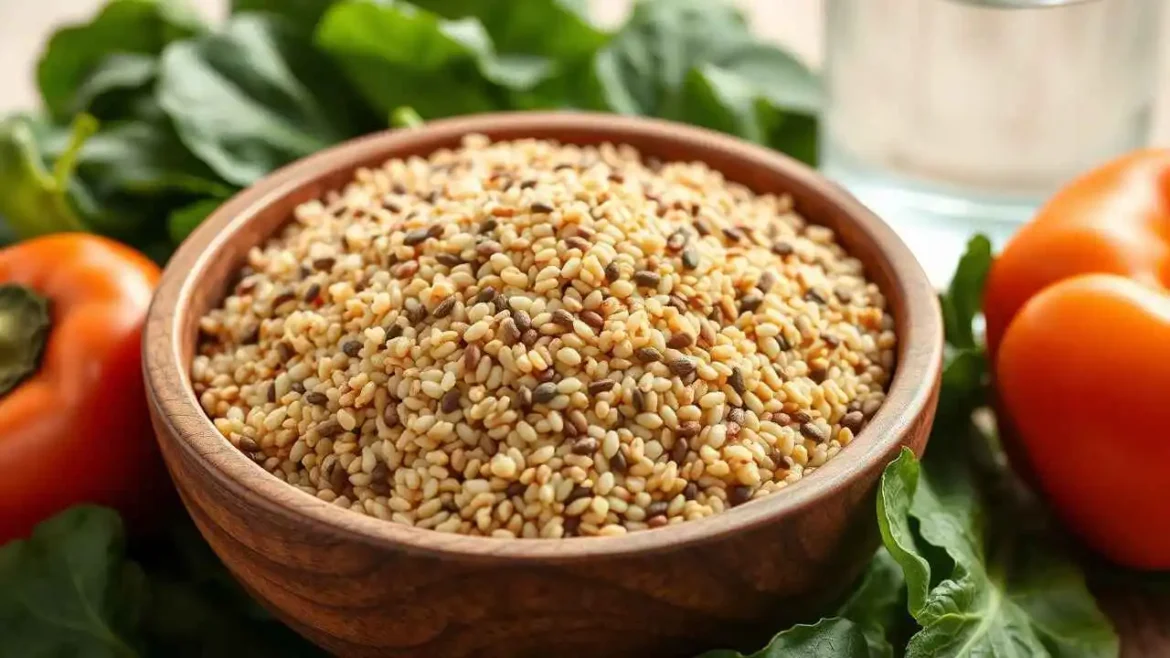
Nutritional Power and Benefits of Quinoa
For centuries, nestled high in the Andean mountains of South America, a remarkable grain-like seed sustained ancient civilizations. Known as “the mother of all grains” by the Incas, quinoa (pronounced KEEN-wah) was revered not just for its resilience but for its incredible nutritional bounty. While it has formed the backbone of diets for millennia, it is only relatively recently that we in the Western world have truly begun to appreciate the profound health benefits this tiny powerhouse offers. As we navigate an increasingly health-conscious landscape, quinoa has emerged as a true superfood, and for good reason. From its unique protein profile to its wealth of essential minerals and antioxidants, quinoa stands out as a dietary staple that can dramatically enhance our well-being.
Let us delve into the myriad ways incorporating quinoa into our daily meals can contribute to a healthier, more vibrant life.
A Nutritional Powerhouse: What Makes Quinoa So Special?
Before we explore the specific benefits, it’s crucial to understand the impressive nutritional composition that sets quinoa apart. Unlike many grains, quinoa is an anomaly in the plant kingdom. It is technically a seed, related to spinach and beets, rather than a true cereal grain. This botanical distinction allows it to offer a more complete nutrient profile.
To give us a clearer picture, let’s examine the typical nutritional content of cooked quinoa (per 100 grams):
| Nutrient Category | Typical Amount (per 100g cooked) | Key Benefits |
| Calories | 120 kcal | Energy source |
| Protein | 4.4 g | Muscle repair, satiety |
| Carbohydrates | 21.3 g | Primary energy |
| Fiber | 2.8 g | Digestive health, blood sugar control |
| Fat | 1.9 g | Essential fatty acids |
| Manganese | 0.6 mg (30% DV) | Bone health, metabolism |
| Magnesium | 64 mg (16% DV) | Muscle & nerve function, blood sugar |
| Phosphorus | 152 mg (15% DV) | Bone/teeth formation, energy |
| Folate (B9) | 42 mcg (11% DV) | Cell growth, DNA formation |
| Copper | 0.2 mg (10% DV) | Iron absorption, energy |
| Iron | 1.5 mg (8% DV) | Oxygen transport, energy |
| Zinc | 1.1 mg (7% DV) | Immune function, wound healing |
| Potassium | 172 mg (5% DV) | Fluid balance, blood pressure |
| B Vitamins | B1, B2, B3, B6 | Energy metabolism, nerve function |
DV = Daily Value. Values are approximate and can vary slightly.
This table highlights just how packed with goodness this tiny seed is. Now, let’s unpack these impressive figures into tangible health benefits we can experience.
The Myriad Health Benefits of Quinoa
Quinoa’s rich nutrient profile translates into a wide array of health advantages. We will explore some of the most prominent ones:
1. A Complete Protein Source
One of the most celebrated attributes of quinoa is its status as a complete protein. This means it contains all nine essential amino acids that our bodies cannot produce on their own. This is a rare quality for a plant-based food, as most plant proteins are deficient in one or more essential amino acids. For vegetarians, vegans, or anyone looking to reduce their meat intake, quinoa serves as an excellent foundational protein source.
As renowned nutritionist and author, Dr. Joel Fuhrman, aptly states,
“Quinoa is a nutritional powerhouse; it contains more protein than any other grain, and it’s also a complete protein with all nine essential amino acids. It’s a great source of iron and fiber, too.” This makes it invaluable for muscle repair, growth, and overall bodily functions.
2. High in Dietary Fiber
Quinoa is an exceptional source of dietary fiber, boasting significantly more than many common grains. The fiber in quinoa is primarily insoluble, which aids in promoting regular bowel movements and preventing constipation. However, it also contains a good amount of soluble fiber, which forms a gel-like substance in the digestive tract. This soluble fiber contributes to:
- Satiety and Weight Management: It helps us feel fuller for longer, reducing overall calorie intake.
- Blood Sugar Control: It slows down the absorption of sugars into the bloodstream, preventing sharp spikes.
- Cholesterol Reduction: It can bind to cholesterol in the digestive system, helping to excrete it from the body.
3. Abundant in Vitamins and Minerals
Beyond protein and fiber, quinoa is loaded with essential micronutrients that are often lacking in modern diets. We have seen from the table that it is particularly rich in:
- Magnesium: Crucial for over 300 enzymatic reactions in the body, including muscle and nerve function, blood glucose control, and blood pressure regulation.
- Iron: Vital for red blood cell formation and oxygen transport throughout the body. Its plant-based form is best absorbed when consumed with vitamin C.
- Folate (Vitamin B9): Essential for cell growth and DNA formation, particularly important during pregnancy.
- Manganese: An antioxidant and important for bone development and metabolism.
- Phosphorus: Plays a key role in bone and teeth formation, as well as energy storage and use.
These minerals work synergistically to support our overall health and prevent deficiencies.
4. A Potent Source of Antioxidants
Quinoa contains powerful plant compounds with antioxidant properties, primarily flavonoids like quercetin and kaempferol. These antioxidants help combat oxidative stress in the body by neutralizing free radicals, which are unstable molecules that can damage cells and contribute to chronic diseases such as:
- Cardiovascular disease
- Certain cancers
- Neurodegenerative disorders
Regular consumption of quinoa, with its rich antioxidant profile, can thus contribute to long-term cellular health and disease prevention.
5. Naturally Gluten-Free
For individuals with celiac disease or gluten sensitivity, finding versatile and nutritious grain alternatives can be challenging. Quinoa is naturally gluten-free, making it an excellent and safe option. It can be a fantastic substitute for wheat-based products like pasta, bread, and couscous, allowing those with gluten intolerance to enjoy a wide range of meals without discomfort or adverse reactions.
6. Supports Blood Sugar Management
Despite being carbohydrate-rich, quinoa has a relatively low glycemic index (GI) of 53, which is considered low. This means it causes a slower, more gradual rise in blood sugar levels compared to high-GI foods. Combined with its high fiber content, quinoa can be a beneficial food for individuals looking to manage blood sugar levels, including those with type 2 diabetes. Its ability to provide sustained energy release also helps prevent energy crashes.
7. Promotes Heart Health
The combination of fiber, magnesium, and potassium in quinoa contributes significantly to cardiovascular health.
- The fiber helps reduce LDL (“bad”) cholesterol levels.
- Magnesium supports healthy blood pressure and relaxes blood vessels.
- Potassium helps counter the effects of sodium and maintains fluid balance, both critical for blood pressure regulation.
Regular inclusion of quinoa in our diet can be a proactive step towards maintaining a healthy heart and reducing the risk of heart disease.
8. Aids in Weight Management
As we touched upon earlier, quinoa’s high protein and fiber content are excellent for weight management. Protein increases satiety and reduces appetite, while fiber adds bulk to meals, helping us feel full and satisfied. This dual action can lead to reduced calorie intake and successful weight loss or maintenance efforts. Moreover, the steady release of energy from quinoa helps prevent cravings and overeating.
9. Possesses Anti-Inflammatory Properties
The antioxidants and phytonutrients found in quinoa, including saponins (which are removed by rinsing), phenolics, and flavonoids, contribute to its anti-inflammatory properties. Chronic inflammation is linked to numerous health problems, from arthritis to metabolic syndrome. Incorporating anti-inflammatory foods like quinoa can help mitigate systemic inflammation and promote overall wellness.
How We Can Incorporate Quinoa into Our Diet
Given its incredible versatility, adding quinoa to our meals is remarkably easy. Here are some simple ways we can make it a regular part of our diet:
- As a Side Dish: Replace rice or pasta with quinoa alongside your favorite curries, stir-fries, or roasted vegetables.
- In Salads: Cooked and cooled quinoa makes an excellent base for vibrant, nutritious salads. Add chopped vegetables, herbs, a lean protein, and a light dressing.
- Breakfast Bowls: Cook quinoa with milk (dairy or non-dairy), add fruits, nuts, seeds, and a drizzle of honey or maple syrup for a hearty and healthy start to the day.
- In Soups and Stews: Add a handful of quinoa to thicken soups and stews and boost their nutritional value and protein content.
- Stuffed Vegetables: Use seasoned quinoa as a filling for bell peppers, zucchini, or tomatoes.
- In Baking: Quinoa flour can be used in gluten-free baking, or cooked quinoa can be added to muffins and bread for texture and nutrients.
- Quinoa Patties/Burgers: Combine cooked quinoa with vegetables, beans, and spices to form delicious vegetarian patties.
Remember to rinse quinoa thoroughly before cooking to remove saponins, a natural bitter coating that can affect its taste.
General Consumption Guidelines
Given its stellar nutritional attributes, we can generally consume quinoa frequently, even daily, as part of a balanced diet. It’s a fantastic alternative to other grains like rice or pasta, offering more protein and fiber. However, like any food, moderation and variety are key to ensuring we get a broad spectrum of nutrients from different sources.
Factors to Consider
While safe for regular consumption, a few factors might influence how often we personally choose to eat it:
- Dietary Goals: If we’re focusing on increased protein or fiber intake, quinoa can be a daily addition.
- Digestive Sensitivity: Some individuals might experience mild digestive discomfort due to its high fiber content if introduced too quickly or in large amounts. Gradually increasing our intake can help.
- Oxalates: Quinoa contains oxalates, natural compounds found in many plant foods. For most of us, this isn’t an issue, but individuals prone to kidney stones might need to be mindful of very high oxalate intake across their diet. Rinsing quinoa thoroughly before cooking helps reduce oxalate levels.
- Dietary Variety: Relying on any single food too heavily can lead to nutrient imbalances. We aim for a diverse diet that includes various grains, vegetables, fruits, and proteins.
Recommended Consumption Frequency



